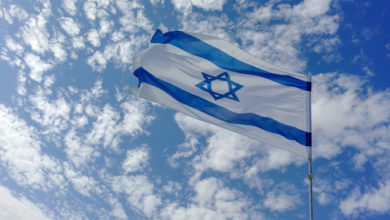The Beginning, the Middle, and the End
Why did our tradition choose the Song of David (Samuel II 22:1-51) as the Haftarah of the Torah portion of Ha’azinu, which contains the epic exalted poem written by Moses?
For the portion of Beshalach, which includes the epic poem of the Children of Israel at the Red Sea celebrating the victory over the Egyptian army, the Song of Deborah is indeed fitting, since this also commemorates a great military victory. However, Ha’azinu is a broad review which begins at the beginning of history and ends with hints of resurrection in the end of days. What does this have to do with David’s victory song after his wars?
It would seem that the reason for this is related to the unique character of the life of David. While the portion of Ha’azinu presents a review of the beginning and the end of history, the life of David marks the exact middle of human history. From the time of Adam until David, the world continues to exist as a result of the primordial inertia through which it and humanity were created. During this span of history, we encounter great figures which provide the driving force for the formation of the world as we know it: Adam, Noah, Shem, Abraham, Isaac, Jacob, Joseph, Moses, Aaron, Joshua, Samuel, and David.
The sages pointed out the continuity of this dynasty by noting that Adam’s life span of 930 years was originally meant to be 1,000 years, based on the verse, “On the day that you eat from it you will die” [Bereishit 2:17], since by definition a day for the Holy One, Blessed be He, is a thousand years long: “For a thousand years in Your eyes are like yesterday” [Tehillim 90:4]. But Adam “donated” 70 years of his life to David. This means that David served to “fill out” the time span of the first man, Adam, who began human history. Through the effort of his wars, David established the physical earthly Kingdom of Israel, which laid the way for the success of the process of history and for the mending of the path of the world. This was a turning point that started with David.
It is thus very interesting to note the tradition of the disciples of the Gaon of Vilna, that the time span from the birth of Adam until the birth of David is the same as the time from David’s birth until the redemption. The calculation is very simple: David was born in the year 2854 after the creation of the world. Thus the date of the beginning of the redemption is twice that, that is 2854*2 = 5708. And that is the year when the State of Israel was established (in May, 1948).
Thus, David is at the central point of the great historical saga which began with Adam and reaches out to the Messiah, the King, that great political figure who will remain true to the Torah of Moses and who will bring justice and peace to the world.
Putting David and Moses together shows the link between the Torah (Moses) and political history (David). While the other nations of the world tend to despair of the element of politics, which as far as they are concerned is the realm of evil people, Judaism teaches an optimistic approach which stems from a deep belief that human history is guided by the Creator of the World, who looks at and maintains an overview of all the generations at once.
And that is why David ends his victory song by showing appreciation for the other nations: “Therefore I will thank G-d within the nations, and I will sing to Your name” [22:50]. This justifies the eternal character of the House of David: “… for David and his offspring, forever” [22:51].
Source: “AS SHABBAT APPROACHES” – a biweekly column in Shabbat B’Shabbato (Zomet Institute) See: http://www.zomet.org.il/eng – Ha’azinu 5775, issue 1593.
If you have not taken this course (free!) – It’s your loss only!
Learn the Seven Commandments which can accelerate your personal and spiritual development, to experience an immediate improvement in your general feelings & relationships that are important to you!
——————————————
![]() “I can recommend this basic course to every truth seeker who wants to learn more about the foundation of universal psycho-physical laws…” [Stephen I. Ternyik (Denmark)]
“I can recommend this basic course to every truth seeker who wants to learn more about the foundation of universal psycho-physical laws…” [Stephen I. Ternyik (Denmark)]



